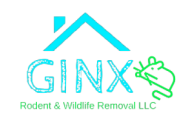Most homeowners understand that insulation keeps homes energy-efficient and comfortable, but many don’t realize its role in pest control. Insulation acts as more than just a temperature regulator, it can also serve as a barrier that helps in preventing pest infestation.
From rodents and cockroaches to insects and even small wildlife, pests often look for accessible, undisturbed areas to shelter, especially in attics and crawl spaces. Poor or damaged insulation makes those areas even more vulnerable. Understanding how insulation works as a defensive measure can be key to long-term pest prevention and overall home health.

Why Insulation Matters in Pest Prevention
Insulation contributes to more than just comfort. It plays an active role in keeping pests out by closing off easy access points and regulating the conditions that make homes attractive to insects and animals.
Common vulnerabilities include:
- Gaps or voids in attic and wall insulation where pests can nest
- Moisture accumulation in damaged insulation materials
- Warm, poorly sealed attic spaces that appeal to rodents during cooler months
By insulating and sealing these areas properly, you’re not just saving on heating and cooling costs, you’re also creating an environment that is much less appealing to unwanted intruders.
How Insulation Helps in Preventing Pest Infestation
Effective insulation can reduce pest activity through multiple mechanisms:
- Blocking Entry Routes: Pests often enter homes through small cracks, gaps in soffits, or open vents. High-quality insulation, particularly spray foam or tightly installed batt insulation, can fill these voids and eliminate easy access.
- Regulating Humidity: Moisture buildup is a magnet for pests like silverfish, cockroaches, and termites. Insulation that supports ventilation and moisture control minimizes the conditions these pests prefer.
- Disrupting Nesting Habits: Insulated and sealed spaces provide fewer hiding spots and nesting opportunities, making them less appealing to rodents and wildlife.
- Thermal Protection: Extreme temperatures can drive pests indoors. Proper insulation helps maintain stable indoor conditions, reducing the temptation for pests to seek refuge.
Each of these points contributes to an environment that’s harder for pests to invade or survive in.
Choosing the Right Insulation for Pest Control
Some types of insulation offer more pest resistance than others. Choosing the right material based on your home’s location, structure, and pest risk is essential.
- Spray Foam Insulation: Expands to fill cracks and voids, making it a strong physical barrier. It also discourages rodents from nesting due to its density.
- Cellulose Insulation: Often treated with pest-repelling substances like borate, making it effective against insects. It also provides good coverage when properly installed.
- Fiberglass Insulation: Less pest-resistant on its own, but can be effective when installed with proper sealing techniques and moisture control strategies.
An insulation upgrade can be a powerful part of a larger home pest prevention plan, especially in areas like attics, garages, or crawl spaces where pest pressure tends to be highest.
Professional Installation and Inspection
Installing insulation isn’t just about rolling out batting or spraying foam, it requires a strategic approach. Gaps, poor placement, or compressed insulation can reduce its effectiveness in both energy savings and pest exclusion.
Professional installers bring expertise in:
- Identifying hidden gaps or pest entry points in the attic and wall spaces
- Ensuring consistent coverage that doesn’t compress or leave weak areas
- Selecting pest-resistant insulation materials suitable for your climate
- Inspecting for signs of existing pest activity that may be overlooked
Even well-insulated homes can become vulnerable if materials are improperly installed or degraded over time. That’s why installation and inspection go hand in hand.
Keeping Insulation Pest-Proof Over Time
Insulation isn’t a one-and-done solution. Over the years, insulation materials can degrade, shift, or become damaged, often due to moisture, weather, or the very pests you’re trying to keep out.
To ensure insulation continues to play its role in preventing pest infestation, routine maintenance is essential:
- Annual inspections of attics and crawl spaces for signs of pest damage
- Repairing or replacing damaged insulation, especially after leaks or infestations
- Monitoring for moisture, which can compromise insulation and attract insects
- Maintaining exterior barriers to prevent new pests from finding their way in
These steps also contribute to a more comprehensive plan to create a pest-proof environment that stops infestations before they begin.
Insulation as Part of a Holistic Pest Prevention Strategy
While insulation is a key component in pest control, it works best when integrated with other strategies. These include:
- Sealing exterior entry points such as vents, soffits, and foundation cracks
- Keeping yards clear of brush and debris close to the home’s perimeter
- Proper food storage and trash disposal to reduce attractants
- Maintaining dry, well-ventilated indoor areas to deter moisture-seeking pests
- Regularly scheduled professional pest inspections
Together, these tactics form a layered defense that significantly reduces the risk of infestations year-round. This also lowers your exposure to the health threats pests can pose, from allergens to disease-carrying parasites that thrive in hidden corners of the home.
The Takeaway: Seal Out Pests Before They Start
Insulation isn’t just about comfort, it’s a critical part of home defense. When installed and maintained correctly, it helps keep rodents, insects, and other pests from turning your attic or crawl space into a nesting ground. It also enhances the efficiency of your home and improves air quality.
If you’ve experienced pest issues or suspect your insulation may be compromised, it’s worth having a professional take a closer look. Hidden gaps, moisture damage, or outdated materials could be silently inviting pests in.Contact Ginx Rodent and Wildlife Removal today to schedule a detailed inspection and get expert guidance on how insulation can be part of your long-term strategy for a safer, pest-free home.







